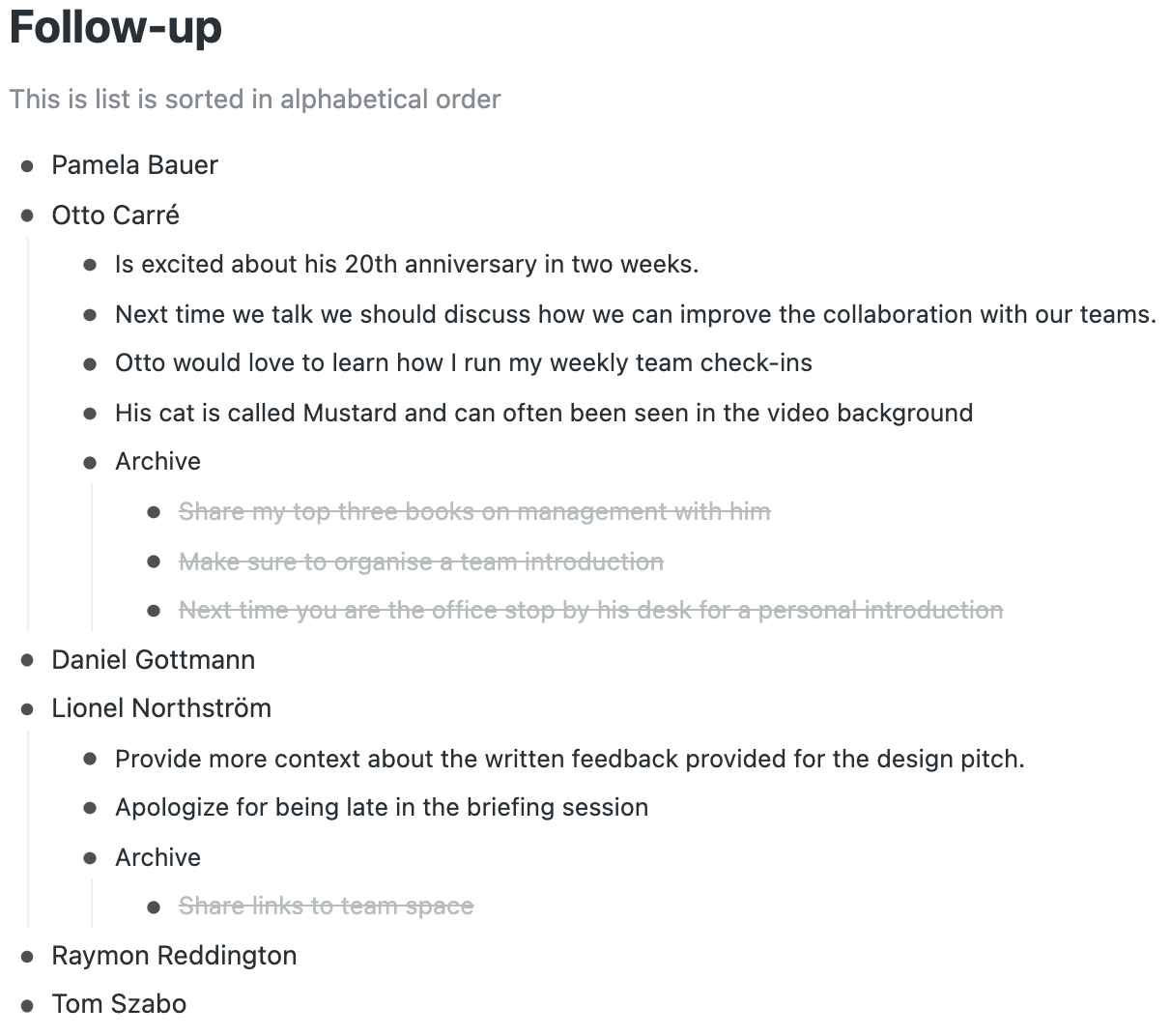My system on how I keep track of whom I meet and what we talked about.
My typical workday is packed with meetings and human interactions. Well-structured sessions should have the desired outcome and make it easy to derive tasks from them. My key learning is that many conferences or run-ins with people you will have are unstructured. The result for me was that I had hazy memories of what we discussed and agreed on or sometimes just missed some critical details.
I tried different systems in the last 15 years, which all failed me. The obvious solution would be to have structured meeting notes for every interaction you have. I later refined that to have one structured note per day. Nevertheless, searching through the before-mentioned notes is painstaking when you are unsure what you are looking for. Later, I tried to log everything in my task list. This system seemed the right approach since I had everything in one place. Unfortunately, many things I wrote were not actionable and should not have been on my task list.
After a lot of trying and error, I found a better system which I have now iterated over the past three years. Sharing my system with others, I was amazed to learn that most never thought of it, even though it seems obvious. I am sharing it with you, hoping it might improve your life.
I have one structured list, which I call "Follow-up". Every time I have a first significant interaction with someone, I add their name to the list. I use the following format:
Firstname Lastname Notes - Archive
From then on, I will put anything relevant into the notes section. The list will naturally start to grow. Whenever some notes become less relevant, I will tuck them away in the archive. The global list is alphabetical to make it easy to find people.

Screenshot from an example follow-up list
I am using an outliner app for this. The nice thing about my system is that it also works with a word document, an excel file or even a paper notebook if you don't care about the sorting. There are multiple reasons why this system works so well for me:
- You don't need special tools or processes; you can set up your follow-up list in seconds.
- I only have to look in one place.
- Every person is in that file, and if I don't find something at first glance, I can use a search to jump to the needed position quickly.
- Before meeting someone, I can glance at the list and am instantly prepared for the next interaction. For others, it sometimes feels like I have an insanely good memory, which I don't.
- Moving less relevant things to the archive also ensures that the list remains short and promptly scannable.
One added benefit is that I can offload that to my to-do list if there is something actionable to do and make sure I will not forget it.
This whole system seems obvious and is easy to use. It helps me to offload tons of information from my brain, which is helpful. In addition, the follow-up list is an integral part of how I am doing my job. It reduces cognitive load and stress. I would love to know how you are managing these sorts of things. It might improve my system. On the other hand, I would love to hear if my approach also works for you.